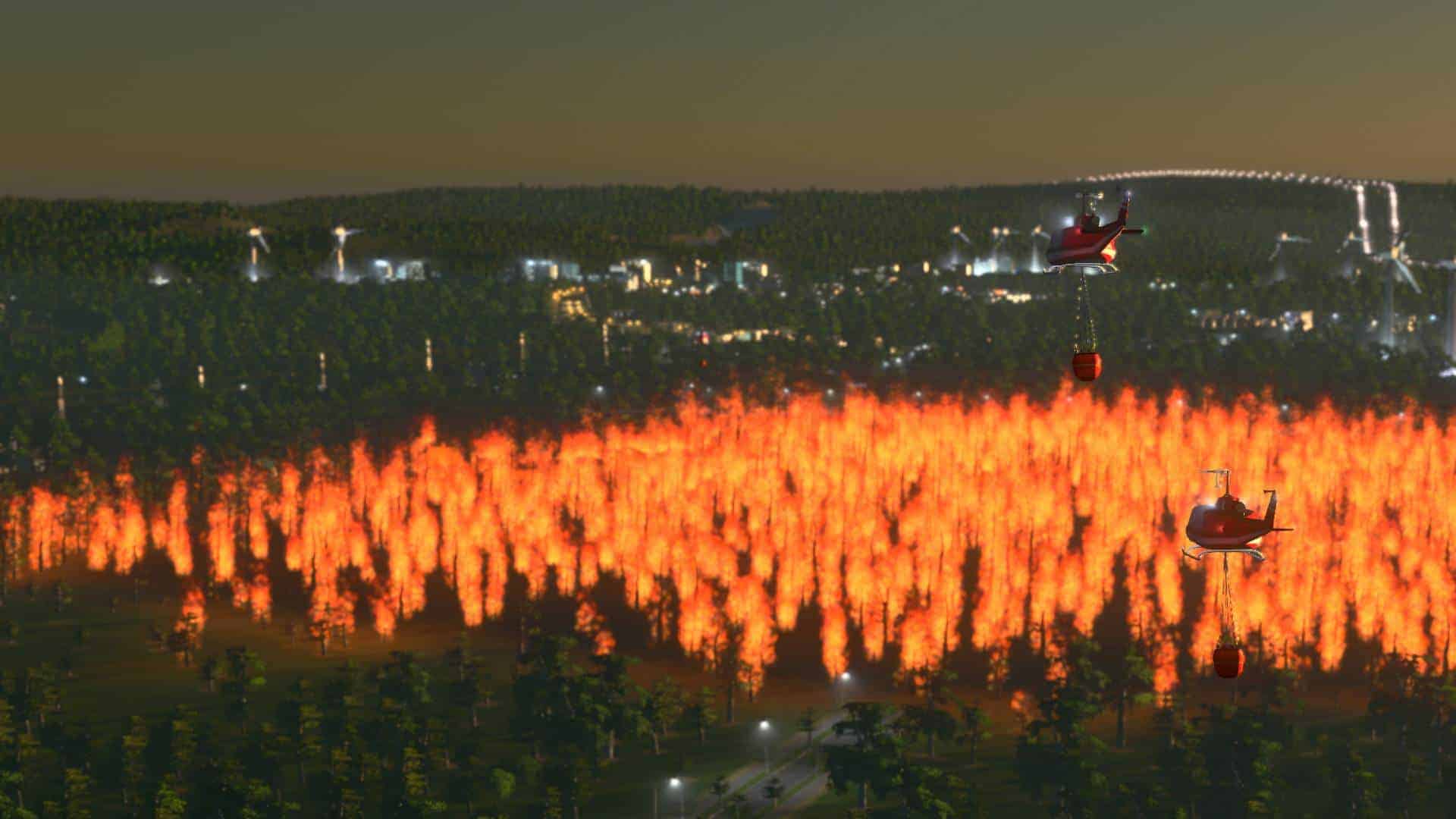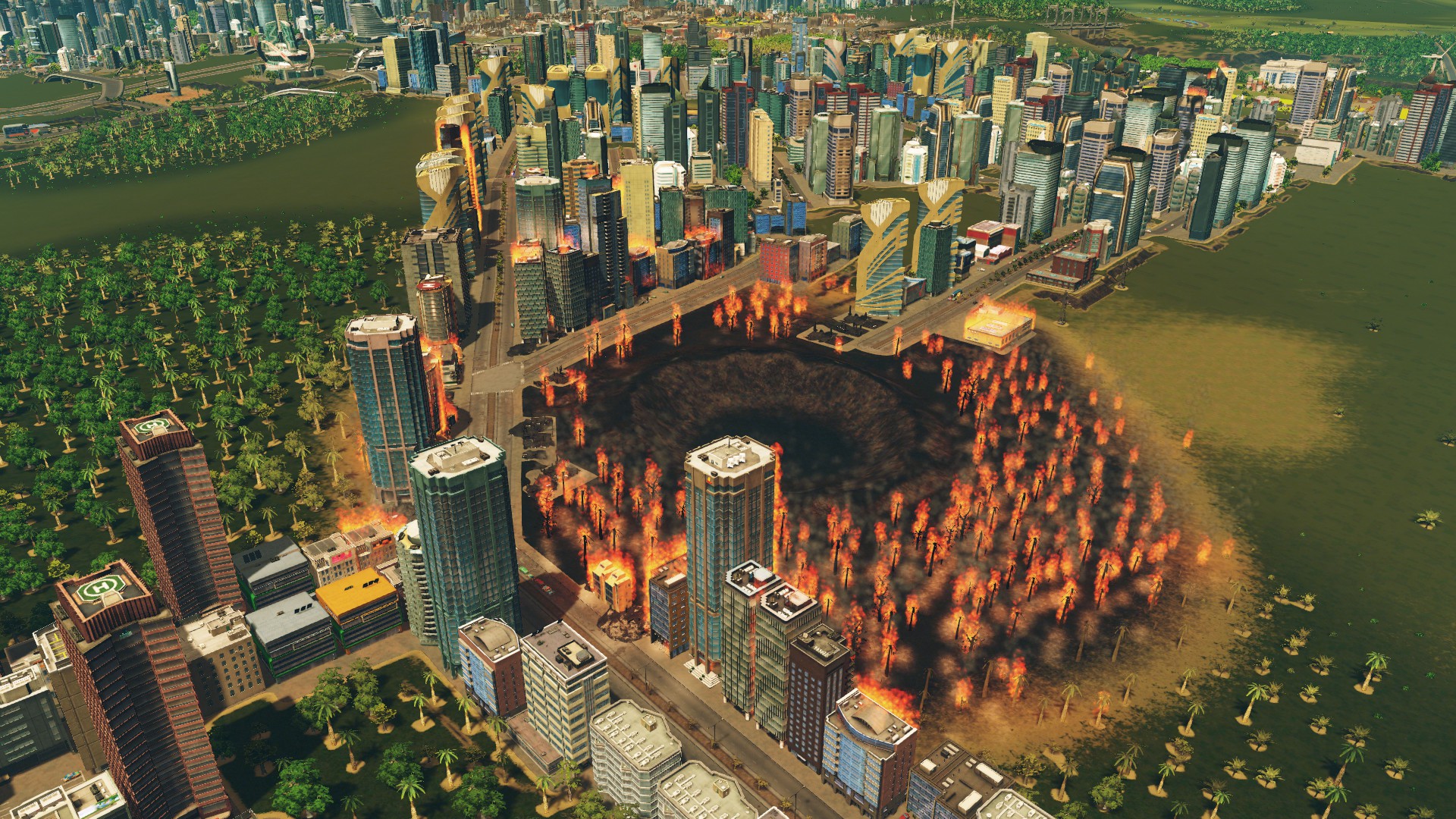
With Great Power Comes Great Response Abilities: Plan for, and respond to, disasters using early warning systems, countermeasures, and new disaster responses such as helicopters and evacuations – finally, a Paradox game where “Comet Sighted” actually means something.Natural Disasters includes Earthquakes, Thunderstorms, Tsunamis, Forest Fires, Tornadoes, Sinkholes and Meteors Deep, Impactful Gameplay: Keep your city going through the devastation of several possible doomsday scenarios, from towering infernos to the day the sky exploded.
#CITIES SKYLINES DISASTERS CODE#
There may not be UFOs, but there is plenty to keep you on edge during your time getting back into Cities: Skylines.Ī Steam code for the expansion was provided by the publisher for review purposes. It introduces challenges that to play without this DLC would feel naked otherwise.

Natural Disasters doesn’t, but the scenarios and decisions you have to make in preparation and during a disaster adds tension that never really existed in the core game. After Dark and Snowfall expansions added things that felt like they should have been there in the base game, and felt necessary as a result. This more like the After Dark expansion where you did most everything the same except for planning for night time, and less like the Snowfall expansion where you had to be hands-on all the time to make sure you had heated pipes and extra warm for your citizens.Ĭities: Skylines – Natural Disasters is the DLC you don’t really need, but is something you definitely want. The day-to-day play in Natural Disasters feels like regular Cities: Skylines. Though, Natural Disasters are really only prevalent when they happen or when you’re planning for one. There’s a new radio station in the game that will emit emergency broadcasts.
#CITIES SKYLINES DISASTERS HOW TO#
It is a challenge when figuring out how to overcome adversity when a tornado wipes out your carefully positioned schools, landfills, or emergency responders. But being equipped doesn’t make you impervious to the damage any of the above disasters will cause. This covers a wide range of ways to better equip your city from disaster. In the Fire Department group, you’ll have access to Helicopter Response Units, Disaster Response Units, Emergency Shelters, Radio Masts, Earthquake Senors, Tsunami Buoys, and Radars. When a disaster strikes, you have new options to evacuate people safely. As of now, there are not any monsters or UFOs, but the more realistic tone to the game seems to suit the game, and they aren’t missed by me in any way. Meteors are the most devastating of all, and have cascading impacts for a long time. Tornadoes of course do their worst damage over time and carve a path of destruction along the way. Sink holes remind everyone of real events that took place in Chile and will take whole blocks with it. Forest Fires spread quickly, and in high wind areas can be almost unrecoverable. Tsunamis are a result of earthquakes depending on the locale and can submerge even your taller buildings into the ocean.

Thunderstorms won’t do that much damage, but introduces lighting and flash floods. Things like earthquakes will level sections of your city and ruin your tallest skyscrapers. The types of disasters are eerily accurate and devastating in ways that didn’t seem as fun. And remember, with the ability to save at anytime, you can roll back to a pristine city once you’ve seen it destroyed. You can build up a city to its maximum potential, or use the San Francisco map from the Steam Workshop, then turn it on and set it to very often to then see maximum destruction on your delicate cities. You can toggle this off if they ever become a nuisance or are playing in a city you don’t want to have destroyed or maimed, but this poses a question of “why bother owning it?” Well the answer to that is it can be a playground. I should note this is a global setting, so it is either on or off for all cities you have saved. From the cities you start with, have saved, or the 5 scenarios built around disasters you can play, disasters happen randomly. You are able to control how often or how little they appear with a slider. The Natural Disasters in Cities: Skylines are much more fleshed out. Natural Disasters adds a layer of complexity and challenge that while I don’t find it to be a necessary addition, it is a much welcomed one that makes Cities: Skylines feels more of a complete game than when it launched in early 2015.Ĭolossal Order didn’t just take the disasters from SimCity and be done with it. But those wanting more out of the game were out of luck, as it simply wasn’t there.

Cities: Skylines was a game where I was fine playing a city-builder that didn’t have disasters in it, mainly because I, like many of us, destroyed our own cities simply by poor planning.


 0 kommentar(er)
0 kommentar(er)
